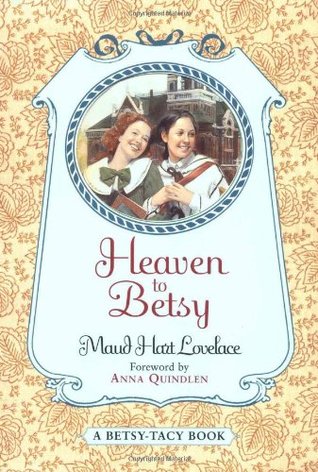In this, the first of the "older" Betsy-Tacy books, great changes are afoot. Betsy has spent a part of her summer visiting family friends away from Deep Valley, and when she returns home, she learns that her house on Hill Street is for sale. The Rays will move to a new house with gas lights, a newly hired housekeeper, and other modern amenities, which will become a gathering place for Betsy's friends in "The Crowd." Tib has moved back to Milwaukee, but Betsy and Tacy remain close friends even as their circle widens to take in other girls - and boys. Also on Betsy's mind is religion as she and her sister Julia determine that they wish to be Episcopalians.
Though the appearance of this book, with its sophisticated-looking illustrations, suggests an abrupt change from childhood to adolescence, the transitions feels very natural and gradual in the story. Betsy is understandably overwhelmed by all that is happening in her life and makes a few missteps as her freshman year wears on. Particularly authentic are her concerns over interacting with boys and her disappointment in herself when she lets down her school society by failing to win an essay contest.
Also striking about this book is the way the characters speak to one another. With the exception of some slang phrases, Betsy and her friends speak like contemporary teens. In fact, their voices almost don't seem to match up with their physical appearances which involve "waists" and "pompadours." It's fun to think about being fourteen at the turn of the 20th century, and this books make it easy to imagine exactly what it would be like, and to see that some things about being fourteen will never change.
Based on this book, I now understand why NPR included Betsy-Tacy on its list of the 100 Best-Ever Teen Novels. While Betsy-Tacy is decidedly not YA, this book is quintessentially YA, and equally reminiscent of Beverly Cleary's First Love series, and the Alice books by Phyllis Reynolds Naylor.


No comments:
Post a Comment